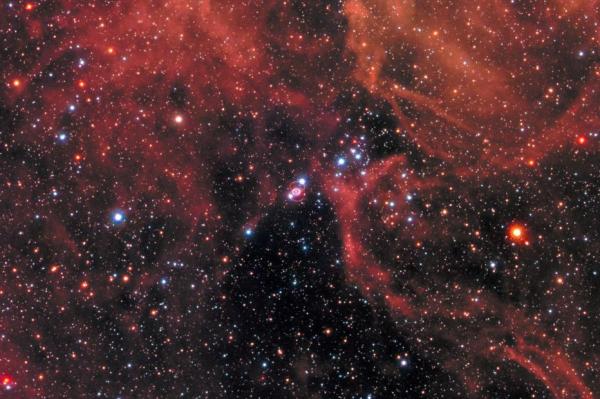
Feb. 24 (UPI) — Hubble is celebrating the 30th anniversary of SN 1987A with a new picture of the famed supernova.
Three decades ago, scientists discovered Supernova 1987A, the stellar explosion producing a kaleidoscopic display of color. It was the closest supernova discovered since the invention of telescopes, and it has since become the most studied supernova in history.
The firework display was produced by the death of a blue supergiant. The star’s violent end sent tremendous amounts of radiation and stellar material streaming outward, lighting up the edge of the Tarantula Nebula in the Large Magellanic Cloud, a dwarf galaxy orbiting the Milky Way.
The light from SN 1987A, which is located 168,000 light-years away, reached Earth on February 23, 1987. Last month, Hubble trained its camera on the Tarantula Nebula once more.
SN 1987A is marked by a unique series of rings of glowing gas and stellar debris. Hubble’s early surveys of SN 1987A proved the rings were present prior to the stellar explosion. The rings were excited by the tremendous energy of the supernova, yielding fresh X-ray emissions.
The rings’ high-frequency glow faded in the years following the initial explosion, but they were re-energized by the aftershock of the supernova in 2001.
Being the most studied supernova of all time, SN 1987A has offered astronomers the unique opportunity to observe the evolution of a deceased star. The latest image from Hubble adds to the ongoing study of SN 1987A and the quest to understand how stellar explosions shape the environments around them.





